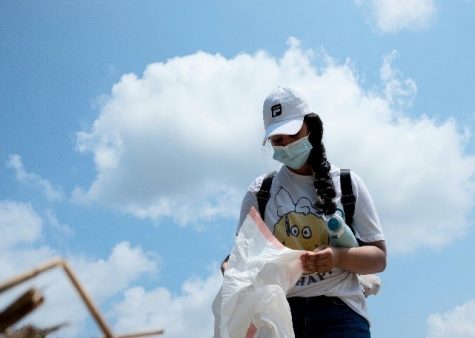From School Laboratory to Garage: How COVID Impacted my Senior Project
December 11, 2020
If you’ve ever watched a movie about a mad scientist like Victor Frankenstein, you might envision a home laboratory to be full of microscopes, tubes, and bubbling flasks. My science laboratory, however, was my parents’ garage, and instead of bringing a dead corpse back to life to uncover mankind’s secrets, I was trying to examine the degradation rate of a mushroom.
Typically, in the summer before senior year, research students spend 5 weeks in the lab working on their projects. However, with the closure of the school in late March, the opportunity to go to the school over the summer was out of the question.
I brought home my experiments on mushrooms so that I could continue to collect data and submit my application to the Regeneron Science Talent Search. Although it was difficult to adapt to the sudden change in environment, my passion for the project as well as the enthusiasm of my instructor, Dr. Grella, helped me persist in my endeavors.

It was at this point when I started my first experiment, which consisted of growing my oyster mushroom spawn on hay substrate and beach wrack to compare their growth rates. In order to grow my mushrooms, Dr. Grella had my growth chamber dropped off to my house along with other supplies.
Reminiscing on the first time I set up my experiment in my garage brings me a good laugh, as the memory of sitting on a stool with my pajama pants rolled up, and crafts scissors in my hand cutting hay seems pretty ridiculous now that I think about it, but the work was necessary.
Some of my most interesting experiences occurred in my laboratory garage where I had to test the degradation rate of mycelium in both indoor and outdoor environments. The mycelium pieces that I set outside needed to be baked for me to weigh them and determine how much mass they lost.
Because these mycelium pieces had been continuously rained on, they needed to be baked several times. Each time made the whole house smell like feet, a complaint I had to hear about several times from my parents.

Although my recollections might appear light-hearted, the most challenging part for me was preparing my last experiment as the Regeneron application deadline approached.
Since I needed to test and compare the compression rate of mycelium and Styrofoam in order to illustrate that mycelium packaging is a better alternative to plastic packaging, data had to be obtained using an Instron machine.

However, I could not go to the Stony Brook lab that I had previously went to because of COVID restrictions. Fortunately, Dr. Grella went to the lab for me to complete my Instron testing. The most tedious part of my project overall, was analyzing the data that I collected, as it took me awhile to understand it and communicate it effectively in my research paper.
The pandemic has tested my patience, as times like these made me want to throw my computer out my window and give up. I would not have pictured a year ago that I would ever have to complete one of the most important applications in my life in the confines of my home. Yet the challenges that I’ve overcome during this time have taught me to become more patient, independent, and self-confident. As a young woman that is about to set foot in the real world, I’m strangely appreciative of the hardships that I’ve endured.



